MS Paint has been a staple in Windows for decades, offering a simple platform for users to create and edit images. With the advent of Windows 11, Paint has undergone a significant transformation, embracing modern design elements and enhanced functionality. In this guide, we'll explore the new features of the Paint app in Windows 11, how to get it, and how to make the most of its updated tools.
What's new in the Paint app in Windows 11?
With Windows 11, the Paint app has been revitalized with a fresh, modern interface that aligns seamlessly with the operating system's aesthetics. While retaining its classic simplicity, the app now features rounded window corners, Fluent Design icons, and an updated toolbar that enhances usability.

The introduction of a rounded color palette and intuitive drop-down menus for brushes, stroke sizes, and flip/rotate controls contributes to a more streamlined user experience. These visual enhancements not only make the app more aesthetically pleasing but also improve accessibility to its tools and features.
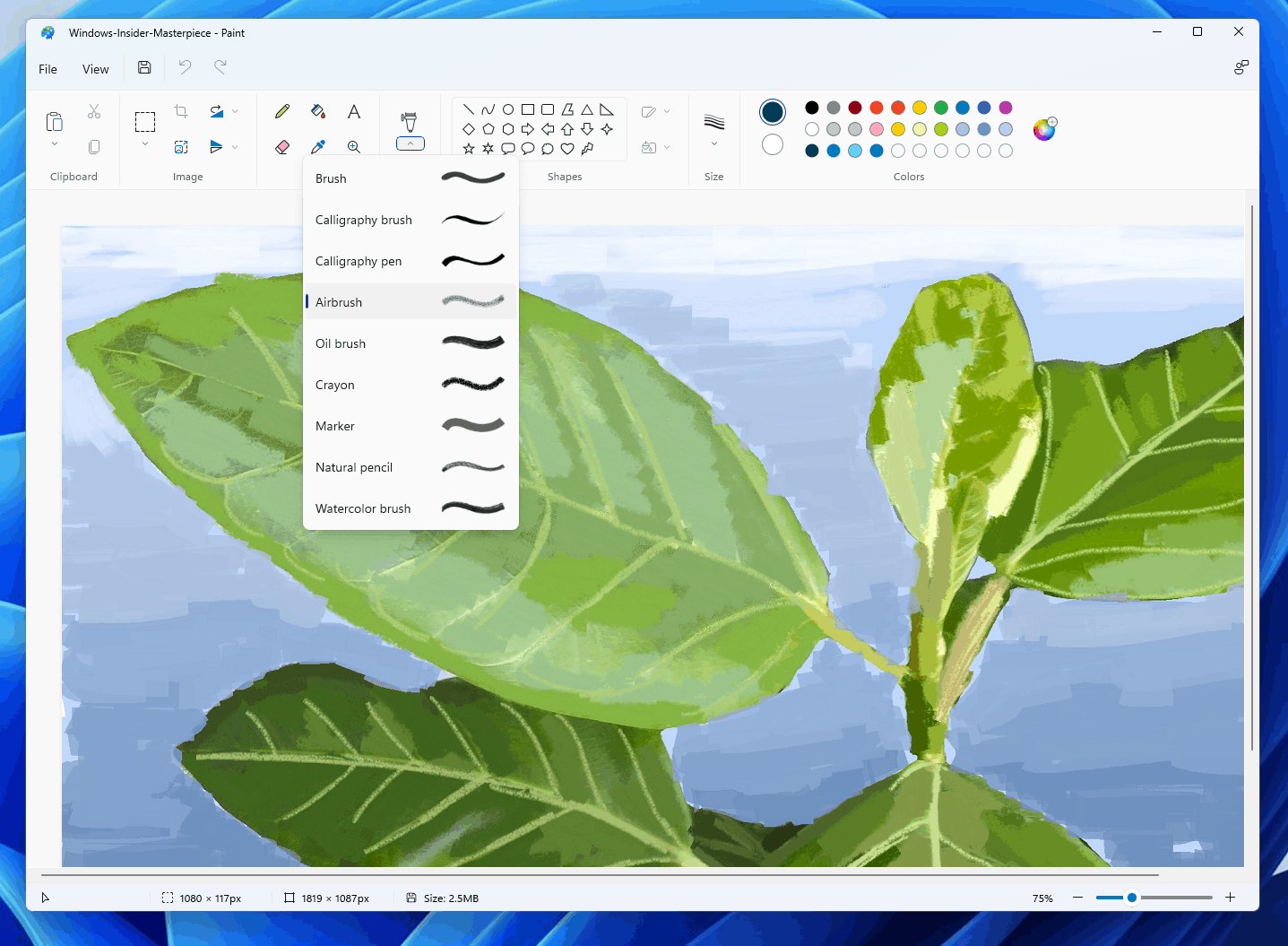
Furthermore, Paint now offers a simplified method for inserting text into your images, making it easier than ever to annotate or add captions to your creations. Microsoft also plans to introduce additional features like a dark theme, centered canvas, and refreshed dialogs in future updates.

Dark Theme preview in upcoming updates to the Paint app.
How to get Paint in Windows 11
If you're using Windows 11 but don't see the new Paint app installed, you can easily download it from the Microsoft Store. Follow these steps to get the latest version:
- Open the Microsoft Store from the taskbar or Start menu.
- In the search bar, type Paint and press Enter.
- Select the Paint app from the search results.
- Click the Get or Install button to download and install the app.
If you have trouble finding it in the Microsoft Store, you can download Paint directly using this link: Paint from Microsoft Store.
How to use Paint in Windows 11
Despite its updated look, the new Paint app remains user-friendly and intuitive. Here's how you can get started with the updated Paint on Windows 11.
To open Paint in Windows 11:
- Click the Search icon (magnifying glass) on the taskbar.
- Type Paint in the search box.
- Select the Paint app from the search results to open it.
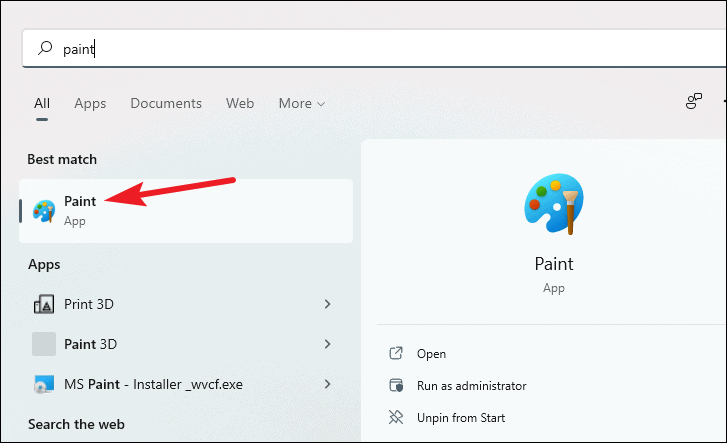
The Paint app opens with the Home menu as a permanent toolbar, ensuring all essential tools are readily accessible.
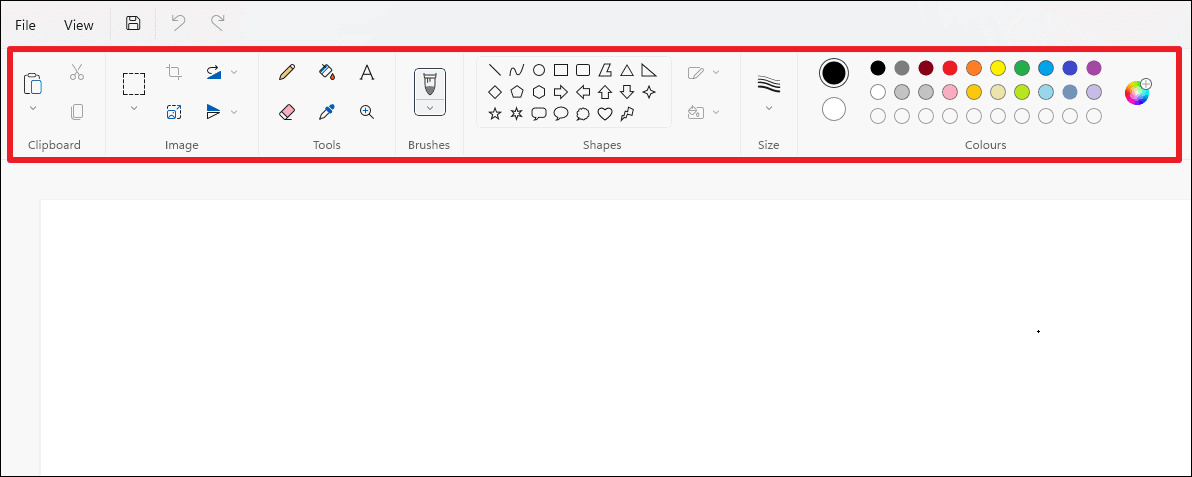
Using brushes:
- Click on the Brushes icon in the toolbar.
- Select the desired brush type from the drop-down menu.
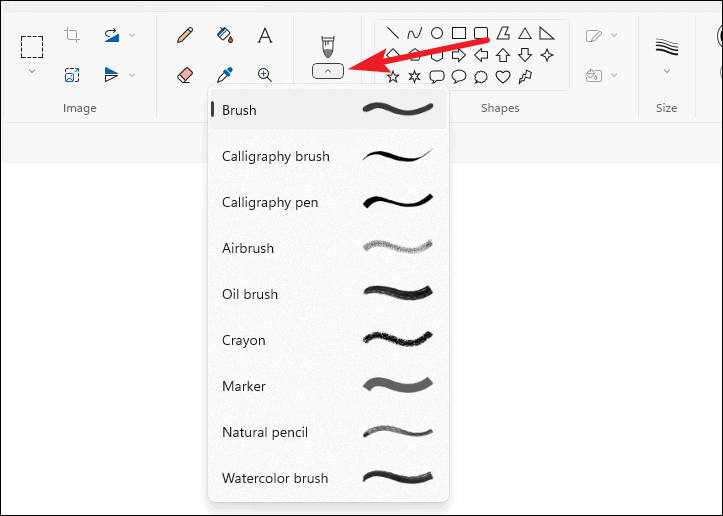
Working with the color palette:
The color palette is located at the far right end of the toolbar. The two larger circles represent your primary and secondary colors. The top circle is Color 1 (primary color), used when drawing with the left mouse button. The bottom circle is Color 2 (secondary color), activated with the right mouse button.
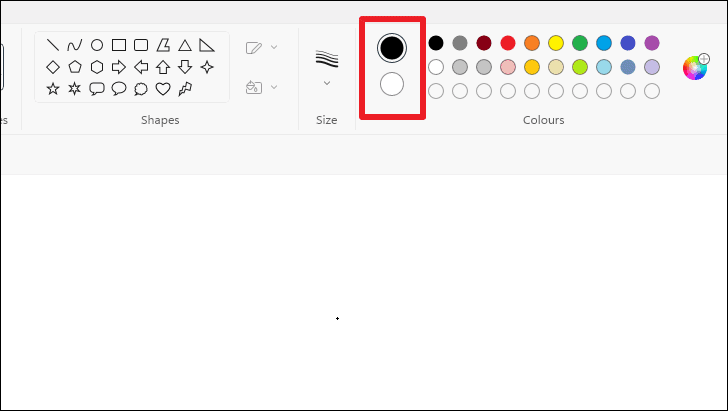
Creating custom colors:
- Click the Edit Colors button (represented by a rainbow wheel) next to the color palette.
- Choose a color from the palette or create a custom one by adjusting the settings.
- Click OK to add the new color to your palette.
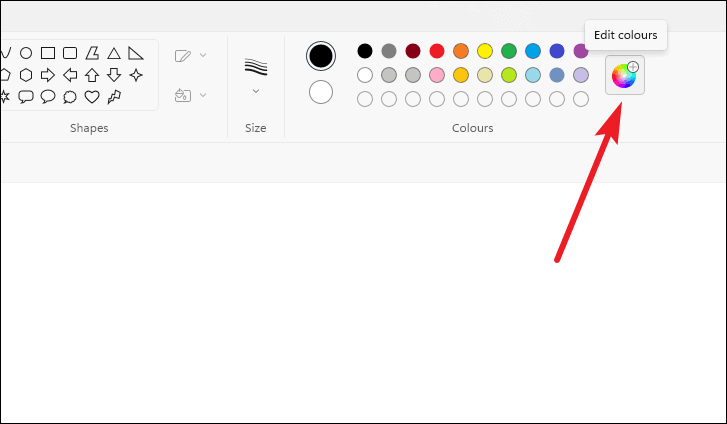
A dialog box will open, allowing you to select or customize colors.

Adjusting stroke size:
- Click on the Size option next to the color palette.
- Select the desired stroke size from the drop-down menu. This setting affects brushes, pencils, erasers, and shapes.

Drawing shapes:
- Select a shape from the Shapes section of the toolbar.
- Click and drag on the canvas to draw the shape.
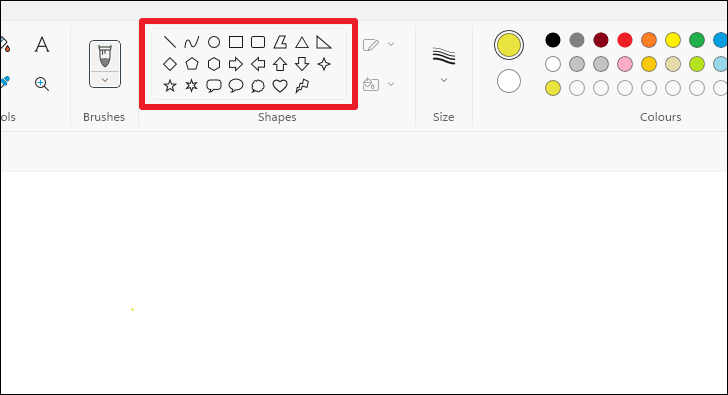
Using other tools:
The Tools section includes options like the pencil, fill tool, eraser, magnifier, color picker, and text tool. To undo any mistakes, press Ctrl+Z to revert your last action.
Adding text to your image:
- Click on the Text icon (represented by an 'A') in the Tools section.
- Click and drag on the canvas to create a text box.
- Type your text into the text box.
- Use the text-specific toolbar that appears below the main toolbar to adjust the font, size, and formatting such as bold or italic.

The text-specific toolbar appears when the text box is active, allowing for various formatting options.
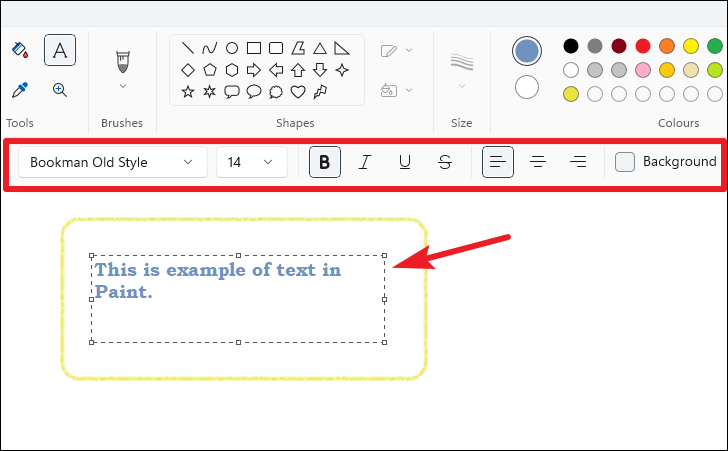
Working with images:
The Image section allows you to select, crop, flip, rotate, or resize your image. These tools are essential for basic image editing and manipulation.
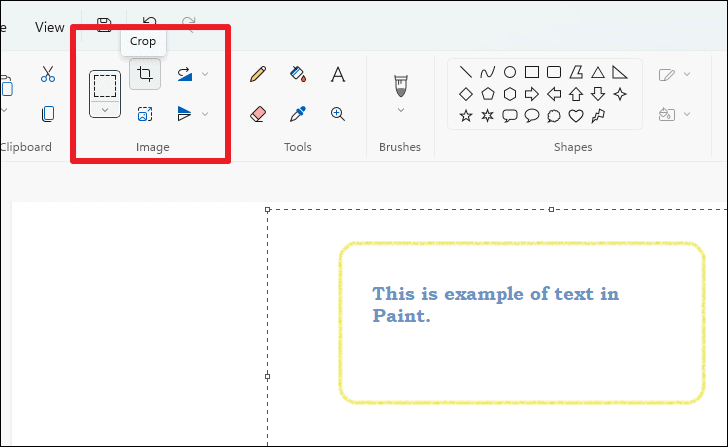
Copying and pasting items:
- Copy the item from another application or within Paint.
- In Paint, paste the item by pressing
Ctrl+Vor clicking the Paste button in the toolbar.

Saving your image:
- Press
Ctrl+Son your keyboard, or click the Save icon (floppy disk) in the menu bar to save your work.

Now that you're acquainted with the new Paint app in Windows 11, you can start unleashing your creativity with its enhanced features. Despite its simplicity, Paint offers a range of tools that can help you produce impressive artwork or simple edits with ease.

